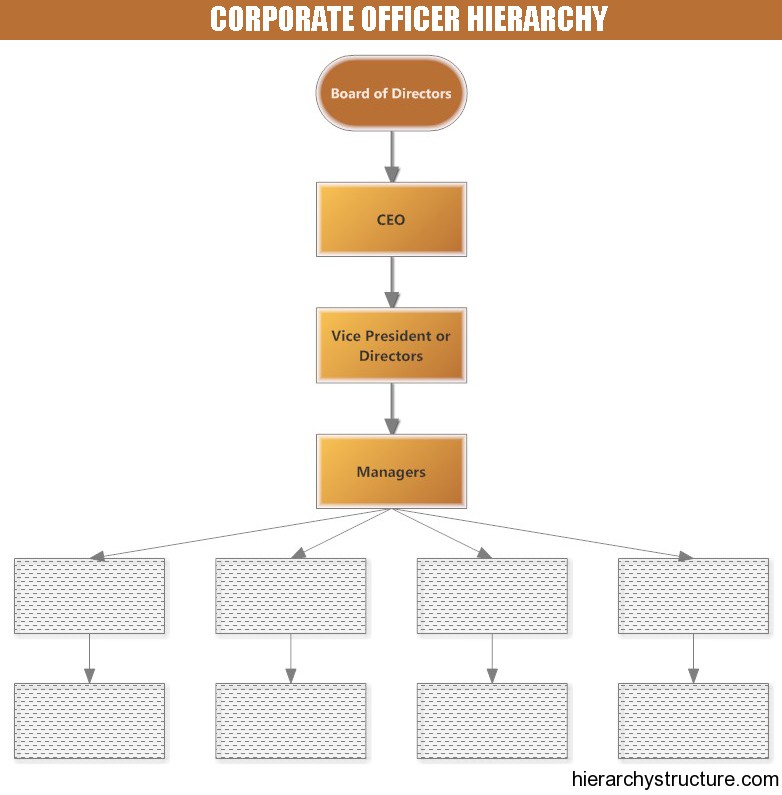An organization is a group which is or has got organized for a common purpose. The group which has organized structure came to be known as organization. No purpose can be achieved by a group of people working for a common aim unless they get organized in a certain structure. This gave rise to the hierarchical arrangements of the organization, so that they may become efficient enough to achieve organizational goals. Hence, most of the organizations nowadays arrange their employees in corporate officer hierarchy.
A hierarchical organization represents a structure where every category of employees in the organization except the top one is subordinate to a single category lying above it in the hierarchical arrangement. In organizations the hierarchy distributes the power, authorities and responsibilities from top to bottom. Every entity on the upper side holds more power and authority than the entity beneath it.
Most of the organizations, corporate structures, government based organizations or religion based organizations follow this hierarchical arrangement with different levels of power, authority, accountability, responsibility, and management.
A corporate officer hierarchy structure is nothing but the hierarchical arrangement of designations and ranks within a corporate structure. Since every organization needs a certain structure for its functioning so most organizations often prefer hierarchical arrangements of ranks in order to define duties, responsibilities and functions at each level of hierarchy.
However, all the companies design their officer hierarchies as per their needs and the tasks carried out in the company. The hierarchical structure of official designations can be visualized like a pyramid containing different levels. This hierarchical arrangement illustrates the chain of responsibilities and commands in an Corporate organization.
- Board of directors – The board of directors can be considered as the pinnacle of the corporate officer hierarchy. The board of directors is elected by the shareholders of the company to give vision and direction to the company. They are also responsible for supervising the tasks carried out in the company from the upper levels.
- CEO – Beneath the board of directors, the highest executive level designation of CEO (Chief executive officer) is placed. A CEO can be considered as the leader of all the operations of the organization, while the chief officer of every individual department takes the responsibility of a particular segment of the organization. For example CTO takes the responsibility of all the technical operations in the company.
- Vice President or Directors – The corporate hierarchy in different organizations use different titles for this level of officials. The next level in the hierarchy after CEO belongs to senior associate level executives who may be named as Vice Presidents or Directors. These officials are responsible for managing individual divisions in the organization.
- Managers – After vice presidents the corporation hires the manager level employees who are responsible for ensuring that the day to day tasks of their certain division are getting completed inefficient manner and within stipulated deadlines.
- The last level of corporate hierarchy constitutes of employees who are skilled professional hired for performing individual tasks or team tasks in the organization depending on their academics, experience and level of interest.

